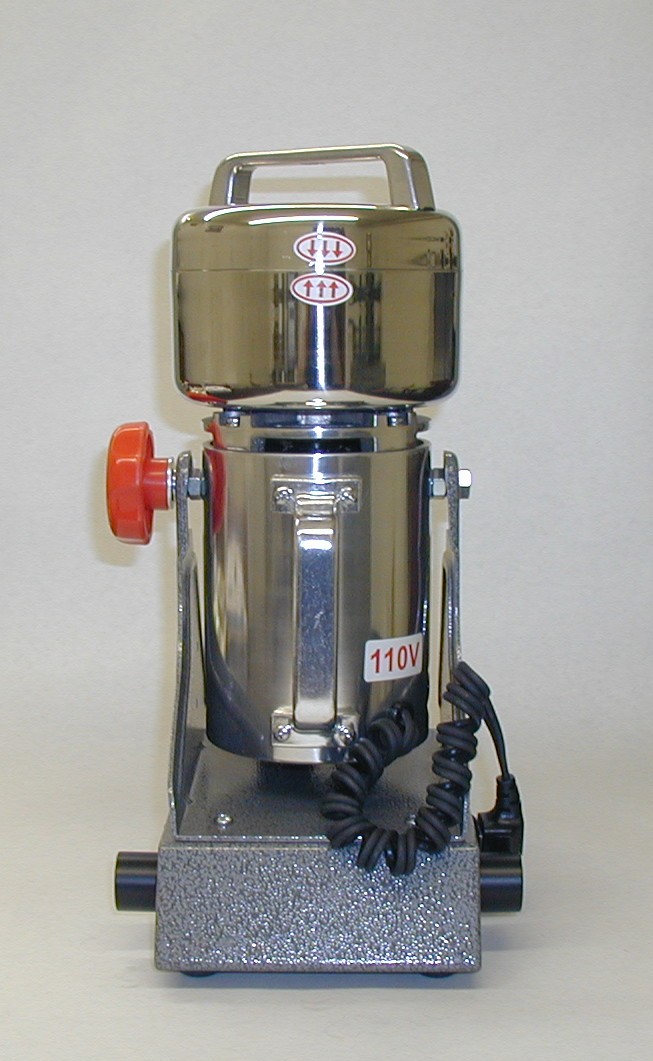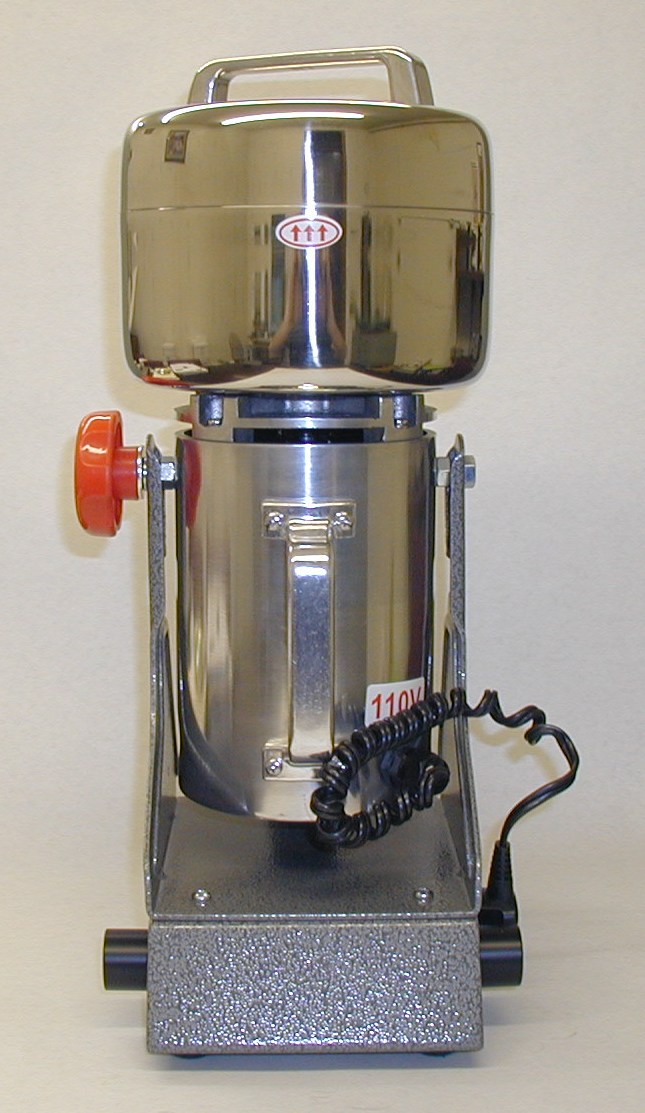|



|
 |
The Strand Mill "Laboratory Preparation of Powder Coatings" Introduction Laboratory development time is critical to any industry. Therefore, to maximize the effort the best tools need to be used. In the development of powder coatings, there are many pieces of equipment that have been developed to reproduce large scale production. Included in this equipment are various laboratory grinders used in an attempt to match the particle size distribution achievable with an ACM (air classifying mill), common to most powder production lines. however, none of these devices have been found to be as effective, low cost, or efficient as the Strand Mill portable table top grinder. This review will compare the efficiency, ease of use, and ultimate particle size achievable with some of the common pieces of equipment used in the laboratory preparation of powder coatings. Types of Mills used to match a production ACM mill The most common pieces of equipment used in the laboratory preparation of powder coatings including the following: coffee grinder, Vitamix, Brinkman, Bantam, and a bench top ACM mill. This equipment ranges in price from $25 for a coffee grinder up to $30,000 for a bench top ACM. A simple coffee grinder consists of fixed blades, a small stainless bowl, and a plastic top. It is limited in capacity, inefficient, and includes plastic parts which cannot be solvent cleaned. Overall, contamination and durability is poor. Another common grinder is stainless steel Vitamix. A Vitamix is no more than a high speed blender, It' odd shaped container with corners, and small blade to height ratio is very inefficient for grinding dry powders. A more expensive option is a Brinkman SR3 mill. This mill grinds with a hammer tooth ring and a classifying screen. The product is ground by the hammers until it is small enough to pass through the screen. These mills are very difficult to clean and generate a lot of heat which frequently fuses the powder. Another choice is a Bantam mill. In principle, the Bantam mill works much like the Brinkman mill, however, it comes with a liquid nitrogen accessory which enables cooling during grinding. The Bantam contains many parts, is difficult to clean, and is not practical for fast evaluations or small samples. The final option is a bench top ACM mill known as the ACM-1. In principle an ACM-1 duplicates the mechanics of a production ACM mill. Although production particle size can be matched, cooling is a problem, it is not difficult to clean, and settings do not always coincide with production equipment. Equipment | Cost($) | Efficiency
(Yield) | Ease of
Cleaning | Particle
Size | Coffee Grinder | 25-100 | 20-30% | Poor | Too Coarse | Vitamix | 350-450 | 20-40% | Excellent | Too Coarse | Strand Mill | 1,300-1900 | 40-50% | Excellent | Slightly Coarse | Brinkman | 13-14,000 | 70-90% | Poor | Too Coarse | Bantam | 20,000+ | 80-90% | Poor | Too Coarse | ACM-1 | 25,000+ | 75-95% | Poor | Excellent |
| What is the Strand Mill Non of the above options enables the fast, efficient, cost effective, preparation of laboratory samples of powder coatings. However, now there is a solution, The Strand Mill. The Strand Mill is a unique portable table top grinder that can quickly reduce flake into powder in less than 10 seconds. The mill consists of a motor housing, stainless steel bowl, two blades, and a stainless screw on top. The key to the Strand Mill is the construction of the blades and the geometry of the container which creates a unique mixing action. With this unit, it is possible to grind up to about 150 grams of flake at a time. Cleanup is easy, and it has been found to most accurately duplicate the particle size distribution of a production ACM mill. No other laboratory piece of equipment can match the easy of use, efficiency, and results of the Strand Mill. Particle Size Comparison In order to compare the performance of the Strand Mill with the other equipment, a standard 50/50 polyester epoxy hybrid was extruded using a Buss PLK-46. The sample was split and ground on the five different pieces of laboratory equipment. All samples were then sieved using a 140 mesh screen, and analyzed for particle size using a Coulter LS-130. The following table is an overlay of the particle size distributions for each piece of equipment. Equipment | Partical Size | Coffee Grinder | 200 microns | | Vitamix | 190 microns | | Strand Mill | 170 microns | | Brinkman | 170 microns | | Bantam | 170 microns | | AMC production | 160 microns |
Note: It was assumed that the laboratory ACM-1 could match the ACM production particle size and there it was not run. Comparing the other pieces of equipment it can be seen that the Strand Mill comes close to duplicating an ACM production mill. The following table compares approximate costs, efficiency, ease of cleaning, and particle size for each unit. | STRAND MILL (LAB GRINDER) COMPARISONS | | SMALL LAB GRINDER MODEL # S101DS | LARGE LAB GRINDER MODEL# S102DS |  |  |
Strand Lab Grinder Specifications | | | | | | | Model | Volts | Amps | RPM | Bowl Capacity | Dim. | Wt. | S101DS | 110 | 10 | 25,000 | 150 Grams | 9d x 8w x 15h | 18 lbs | S102DS | 110 | 15 | 25,000 | 350 Grams | 9d x 8w x 18h | 23 lbs |
| | STRAND LAB GRINDER
Replacement Parts List Model S101DS | | Model S102DS | P/N ITEM | Price US $ | | P/N ITEM | Price US $ | DS101-01 Nut/Lockwasher | | | DS102-01 Nut/Lockwasher | | DS101-02 Blades Set
| | | DS102-02 Blades Set
(1 upper, 1 lower) | | DS101-03 Dust Cover | | | DS102-03 Dust Cover | | DS101-04 Bearing, Upper | | | DS102-04 Bearing, Upper | | DS101-05 Brush Set | | | DS102-05 Brush Set | | DS101-06 Motor
DS101-07 Bowl/Lid | | | DS102-06 Motor
DS102-07 Bowl/Lid | | DS101-09 Bearing, Lower | | | DS102-09 Bearing, Lower | | DS101-10 Felt Washer, (2) | | | DS102-10 Felt Washer, (2) | | DS101-13 Cap, Brush | | | DS102-13 Cap, Brush | | DS102-15 Switch | | | DS102-15 Switch | | *Call For Pricing | | | *Call For Pricing | |
|

|

